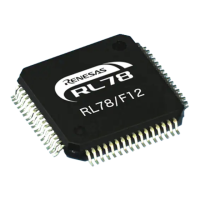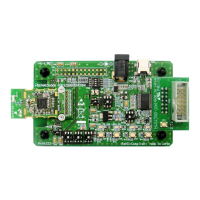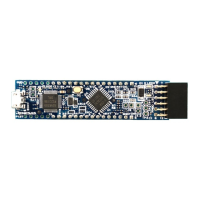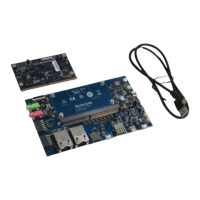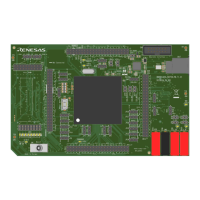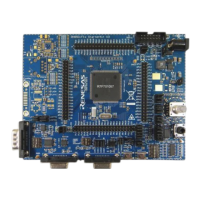RL78/F13, F14 CHAPTER 5 CLOCK GENERATOR
R01UH0368EJ0210 Rev.2.10 371
Dec 10, 2015
2. After reset release, set the CMC register before X1 or XT1 oscillation is started as
set by the clock operation status control register (CSC).
3. Be sure to set the AMPH bit to 1 if the X1 clock oscillation frequency exceeds 10
MHz.
When the X1 clock oscillation frequency is in the range from 1 to 10 MHz, setting the
AMPH bit to 1 improves the oscillation margin.
4. The XT1 oscillator is a circuit with low amplification in order to achieve low-power
consumption. Note the following points when designing the circuit.
Pins and circuit boards include parasitic capacitance. Therefore, perform
oscillation evaluation using a circuit board to be actually used and confirm that
there are no problems.
Make the wiring between the XT1 and XT2 pins and the resonators as short as
possible, and minimize the parasitic capacitance and wiring resistance. Note
this particularly when the ultra-low power consumption oscillation (AMPHS1,
AMPHS0 = 1, 0) is selected.
Configure the circuit of the circuit board, using material with little parasitic
capacitance and wiring resistance.
Place a ground pattern that has the same potential as V
SS as much as possible
near the XT1 oscillator.
Be sure that the signal lines between the XT1 and XT2 pins, and the resonators
do not cross with the other signal lines. Do not route the wiring near a signal
line through which a high fluctuating current flows.
The impedance between the XT1 and XT2 pins may drop and oscillation may be
disturbed due to moisture absorption of the circuit board in a high-humidity
environment or dew condensation on the board. When using the circuit board
in such an environment, take measures to damp-proof the circuit board, such
as by coating.
When coating the circuit board, use material that does not cause capacitance
or leakage between the XT1 and XT2 pins.

